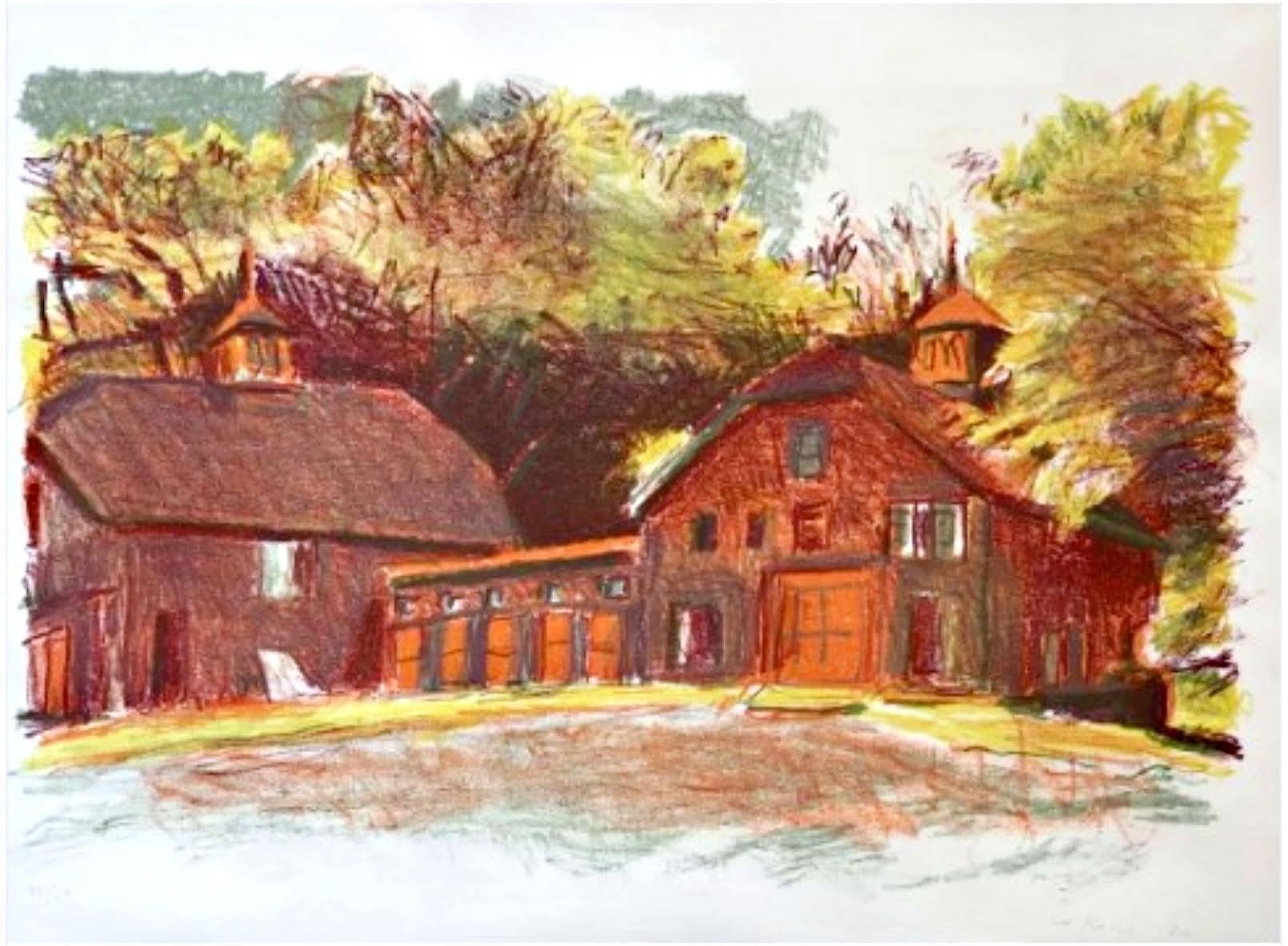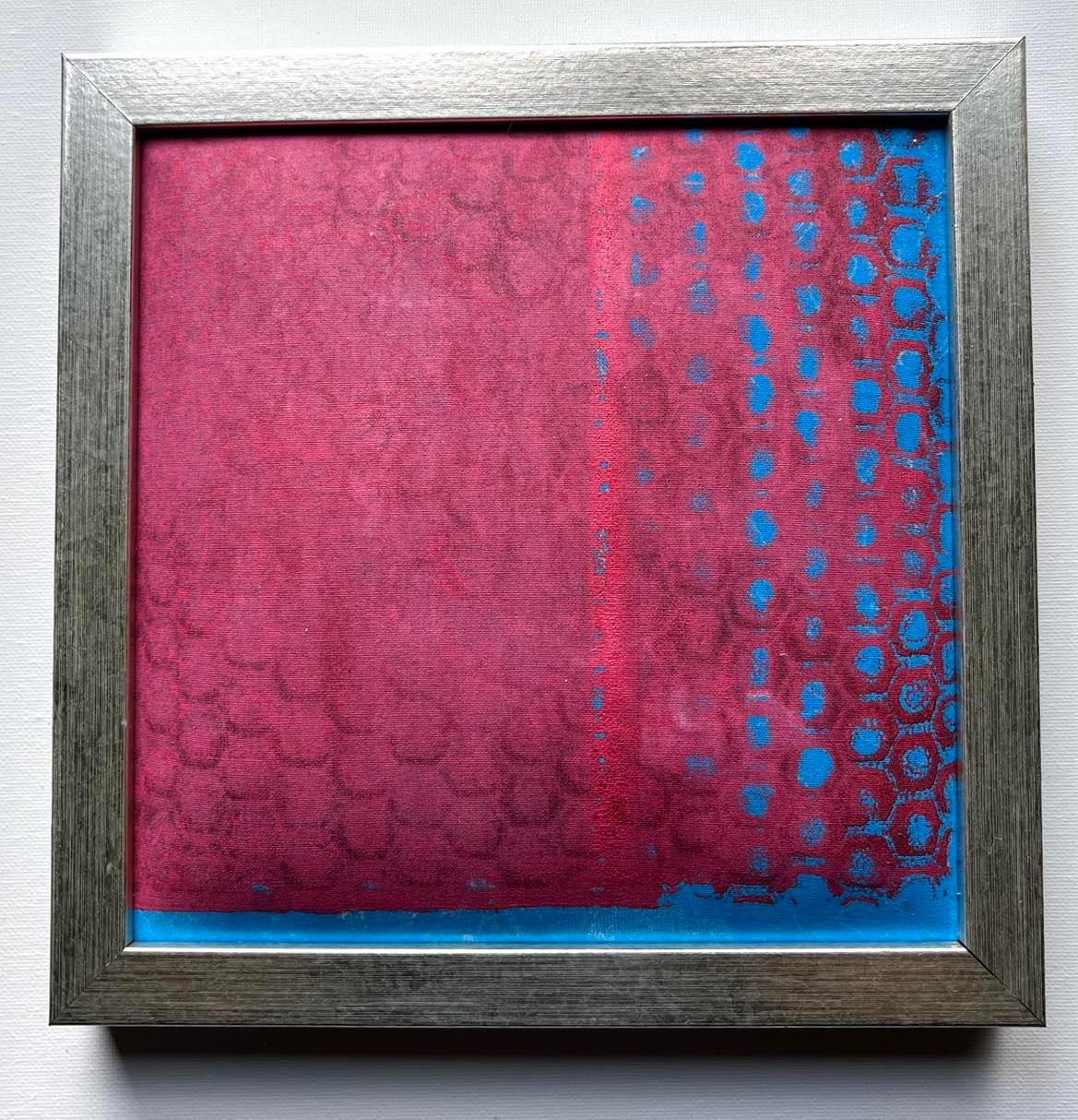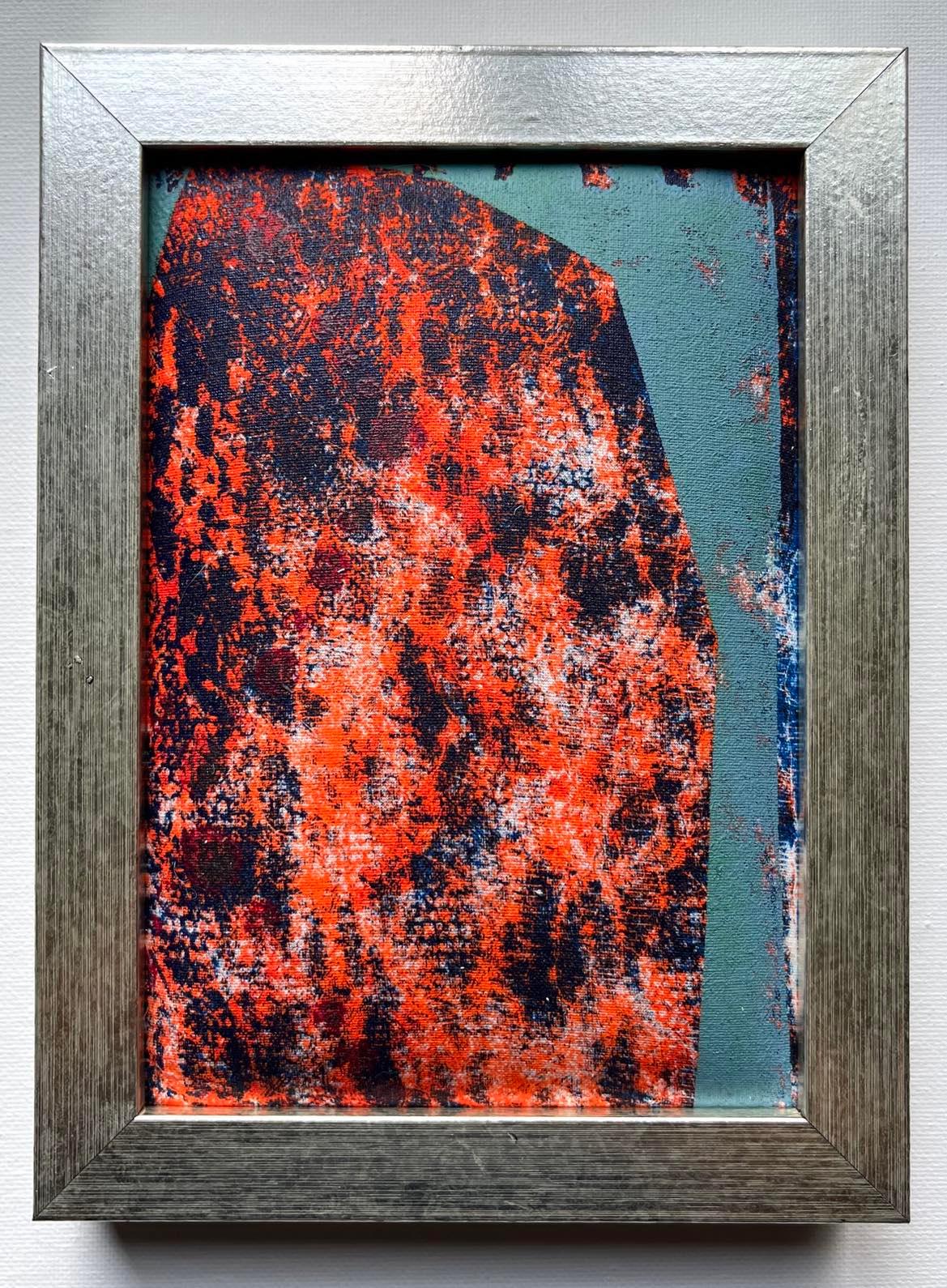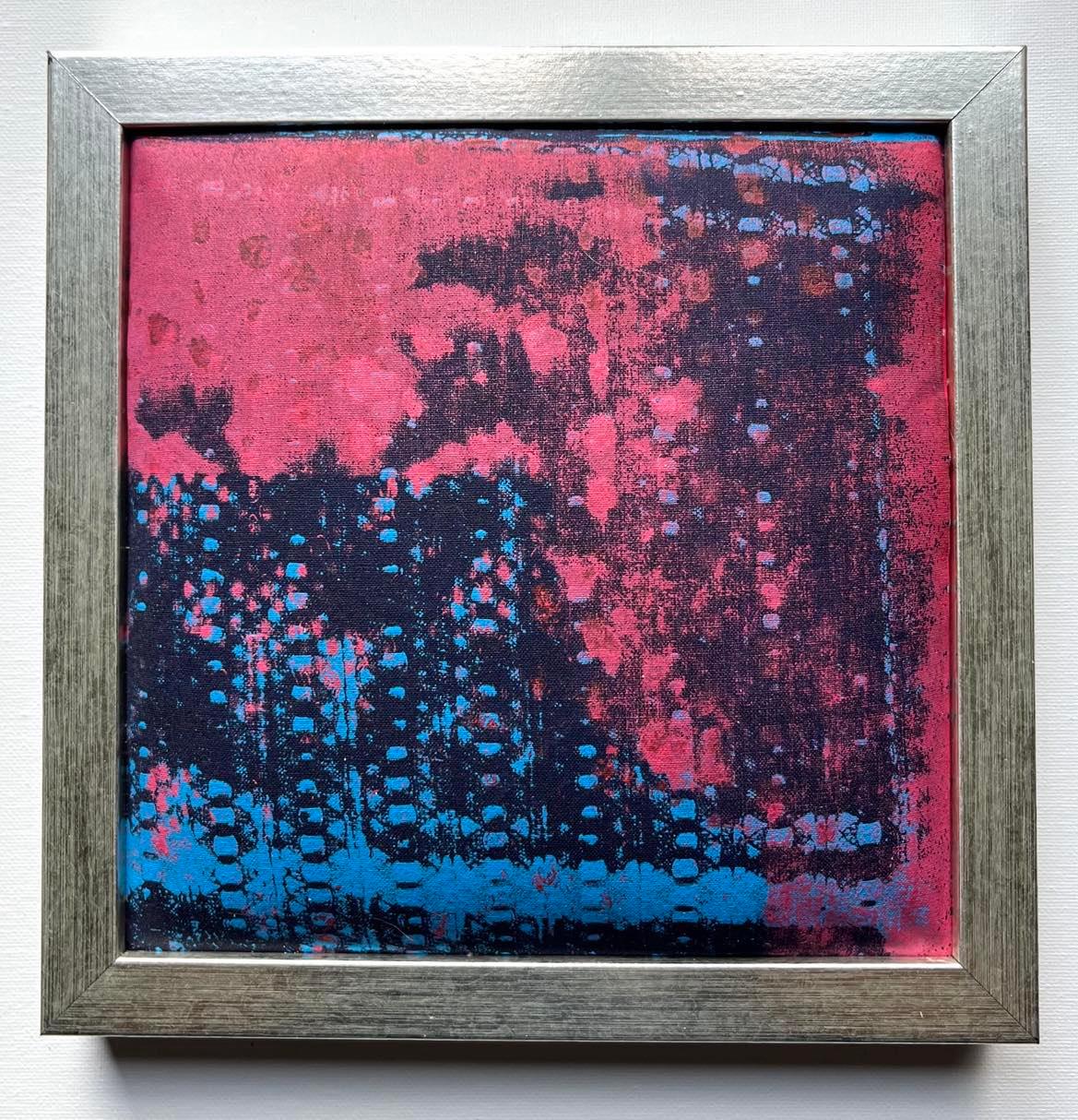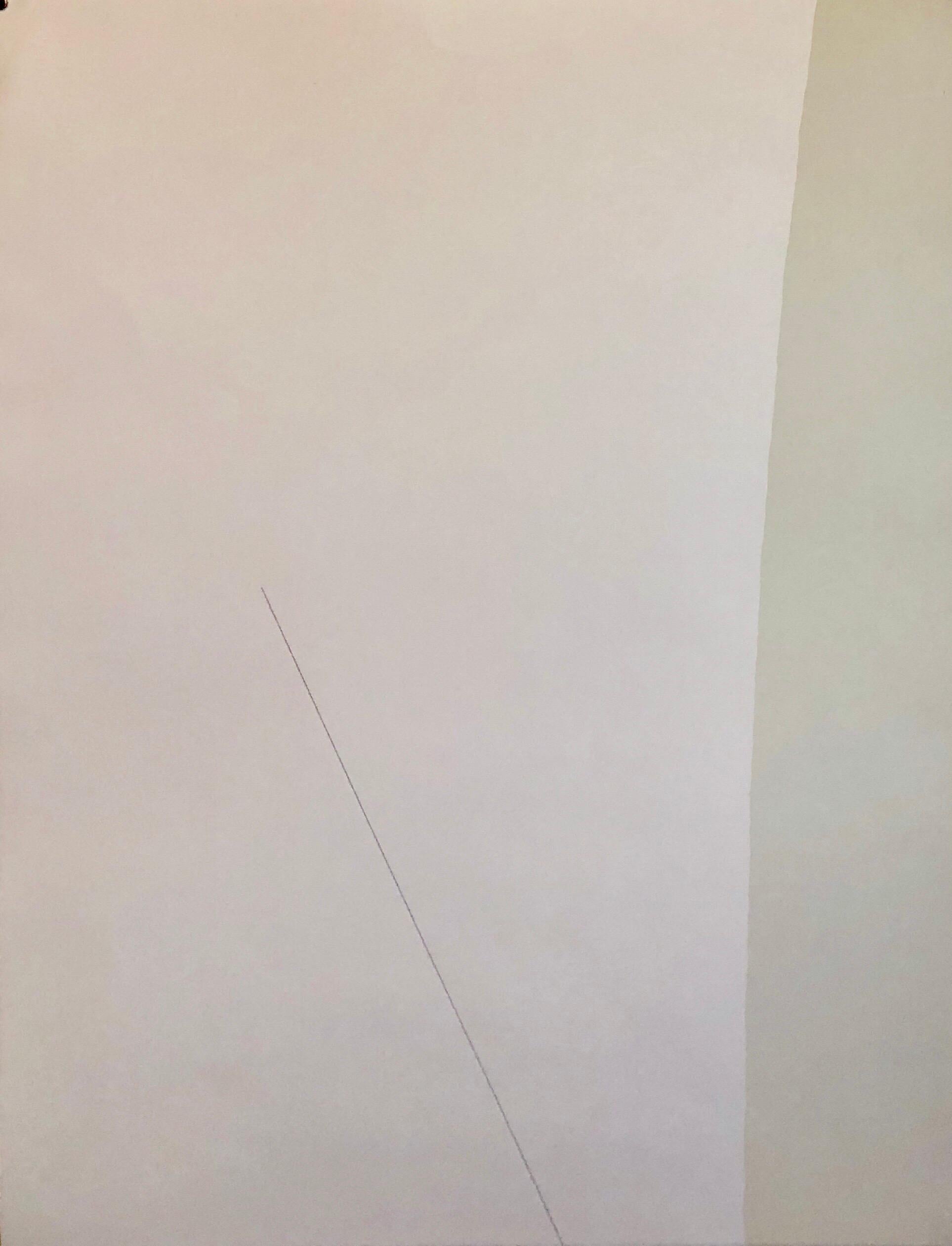Items Similar to Luminous Dawn (dramatic sunrise landscape silkscreen by top color field painter)
Want more images or videos?
Request additional images or videos from the seller
1 of 7
Jules OlitskiLuminous Dawn (dramatic sunrise landscape silkscreen by top color field painter)1997
1997
About the Item
Jules Olistki
Luminous Dawn (from Vera List Print Program, Mostly Mozart, Lincoln Center), 1997
Silkscreen on wove paper
24 1/2 × 35 inches
Signed and dated in pencil and numbered 'AP 18/18' on the front
Unframed
Publisher: Vera List Print Program, Lincoln Center for the Performing Arts
Provenance: Personal collection of Delmar Hendricks, the very first director of the Vera List Print Program at Lincoln Center.
This signed, dated and numbered screenprint in colors on wove paper with full margins - a rare proof from the limited edition of only 18 - was created as a fundraiser for the Mostly Mozart Festival of Lincoln Center and was published by the legendary Vera List Print Program. It is signed and dated in pencil and numbered 'AP 18/18'. It is a rare Artist's Proof, aside from the regular edition of 108. This work has fine provenance; it was a gift from the artist to Delmar Hendricks, the longtime director of the renowned Vera List print program at Lincoln Center.
More about Jules Olitski:
Jules Olitski was born in Snovsk, Soviet Russia (now Ukraine), in 1922. He immigrated to the US with his family in 1923 and settled in Brooklyn. Olitski held his first one-person show in Paris in 1951 and received an M.A. in art education from New York University three years later. In the decade following, he taught at Bennington College from 1963–67. His 1959 exhibition at French & Company garnered critical attention, and he went on to hold more than 150 solo exhibitions internationally in his lifetime. Olitski’s works are included in major public and private collections throughout the world.
- Creator:Jules Olitski (1922-2007, American)
- Creation Year:1997
- Dimensions:Height: 24.5 in (62.23 cm)Width: 35 in (88.9 cm)
- Medium:
- Movement & Style:
- Period:
- Condition:unframed.
- Gallery Location:New York, NY
- Reference Number:1stDibs: LU1745213293302
Jules Olitski
Jules Olitski was an abstract Color Field painting in the mid-1960s, Olitski focused on the material qualities of surface and color in painting, rather than the personal expression of the artist. He pioneered a technique using an industrial spray gun to lightly apply paint on unprimed canvas, creating an effect of hazy color suspended midair. Even after returning to the brush, Olitski maintained this airy interaction of color and light. Olitski represented the United States in the 1966 Venice Biennale, and was given the first solo exhibition for a living American artist at the Metropolitan Museum of Art in 1969.
About the Seller
5.0
Platinum Seller
These expertly vetted sellers are 1stDibs' most experienced sellers and are rated highest by our customers.
Established in 2007
1stDibs seller since 2022
294 sales on 1stDibs
Typical response time: 1 hour
- ShippingRetrieving quote...Ships From: New York, NY
- Return PolicyA return for this item may be initiated within 1 day of delivery.
More From This SellerView All
- Red BarnsBy Wolf KahnLocated in New York, NYWolf Kahn Red Barns, 1980 Color Lithograph on wove paper Hand signed, dated, and numbered 45/50 by the artist on the front Original vintage wood frame included Classic 1980 Wolf Kahn...Category
1980s Color-Field Abstract Prints
MaterialsLithograph
- China (gorgeous silkscreen on lanaquarelle from renowned artist's map series)By Paula ScherLocated in New York, NYPaula Scher China, 2013 Hand pulled silkscreen on deluxe Lanaquarelle paper 24 3/5 × 28 1/5 inches Edition of 95 Pencil signed and numbered on the front Unframed Paula Scher Biography Renowned graphic designer and artist Paula Scher's silkscreen China, from her map series, represents a subjective take on the country’s superpower status. Through the visual vibrancy of information overload in the print, Scher captures the swift transformations taking place in a country steeped with a rich cultural and historical fabric. The multi-directional, scrawled names of sites and statistics speaks to China’s complicated history, from its imperial age of dynasties and warlord conquests, to the violent tumult of its communist conversion. Paula Scher is one of the most influential graphic designers in the world. Described as the “master conjurer of the instantly familiar,” Scher straddles the line between pop culture and fine art in her work. Iconic, smart, and accessible, her images have entered into the American vernacular. Scher has been a partner in the New York office of Pentagram since 1991. She began her career as an art director in the 1970s and early 80s, when her eclectic approach to typography became highly influential. In the mid-1990s her landmark identity for The Public Theater...Category
2010s Pop Art Abstract Prints
MaterialsScreen, Graphite
- Paris Review (Lt. Ed. S/N) 1960s print by renowned Pop Artist abstract landscapeLocated in New York, NYAllan D'Arcangelo Paris Review, 1964-5 Silkscreen 32 × 26 inches Signed and numbered from the limited Edition of 150 pencil signed, numbered and dated on the front Unframed Published by the Paris Review, Printed by Steven Poleskie at Chiron Press, New York Allan D'Arcangelo created this work in 1964 as a benefit print for the eponymous Paris Review magazine which invited some of the most famous artists of the era to contribute. Over the next decade, D'Arcangelo would continue to receive significant recognition in the art world - exhibiting at Fischbach and then Marlborough Galleries in Manhattan. He was well known for his paintings of the iconic American highway, along with his depictions of desolate, industrial landscapes. In her essay "Ghost on the Highway: Allan D'arcangelo's Haunting Americana", Alice Bucknell writes, "A born-and-bred New Yorker, D’Arcangelo spent his due time trawling through the Bible Belt of the Deep South and the dizzying expanse of the Southwest desert as well as the more expected outposts of New York and L.A. Taking a particular favor to the way acrylic interacts with light — how it avoids the glistening sheen of oil, and how the flatness of the medium masks the presence of the artist’s hand — D’Arcangelo teases out complex ideas of the highway’s reality and representation, its rampant commercialization and maddening isolation, as well as escapism and entrapment as two split personalities of American infrastructure space through his signature flattening one-point perspective. “My most profound experiences of landscape were looking through the windshield,” D’Arcangelo explained to Marco Livingstone in the spring of 1988 while the two drove from New York City to the artist’s studio in upstate New York: an idiosyncratic interview included in the exhibition catalogue. “The sky, the tree line and the pavement all have the same quality, and it has to do with our separation from the natural world.” Far from the sugar...Category
1960s Pop Art Abstract Prints
MaterialsPencil, Screen
- Moonscape Silkscreen from BannerBy Roy LichtensteinLocated in New York, NYRoy Lichtenstein Moonscape Silkscreen from Banner, 1969 Silkscreen on fold out card. WIth additional (removable) sleeve with greeting and text from the Roy Lichtenstein Foundation 9 ...Category
1960s Pop Art Abstract Prints
MaterialsScreen
- Yvon Lambert Gallery Poster (Hand Signed and Addressed by Dennis Oppenheim)By Dennis A. OppenheimLocated in New York, NYDennis Oppenheim Directed Seeding -Wheat, Historic Yvon Lambert Gallery Poster (Hand Signed and Addressed by Dennis Oppenheim), 1969 Offset lithograph poster. Hand signed, inscribed. Postmarked and addressed to Oppenheim's dealer, John Gibson 23 × 16 inches Hand Signed and inscribed by Dennis Oppenheim lower right in blue marker in 2006, hand addressed by Dennis Oppenheim in 1969 in red marker Unframed This is an extremely uncommon vintage poster/mailer announcing the May 20th, 1969 opening reception (Vernissage) for the exhibition of works by American conceptual art pioneer Dennis Oppenheim at the Yvon Lambert Gallery in Paris. The poster is historic in that it was originally mailed to John Gibson, the East 67th Street dealer, who famously gave Dennis Oppenheim his first New York exhibition in 1968, and it is hand addressed to Gibson, bearing the original Paris, France postmark of 1969. It is, exceptionally, hand signed and dedicated by Dennis Oppenheim to a collector who acquired the poster from John Gibson's collection, and then secured Dennis Oppenheim's autograph in 2006, making this an especially valuable collectors item. More information about the project from the Tate Gallery archives, which acquired the work: This work brings together two interventions Oppenheim created on a field owned by farmer Albert Waalken in Finsterwolde, north-eastern Holland, in 1969. It comprises four distinct elements mounted on board: a colour photograph of a wheatfield being sowed by a tractor in parallel curving lines seen from high up; a negative image in black and white of a map of the area of Finsterwolde onto which two sections of text have been collaged; and two black and white aerial photographs of the same field being traversed by a tractor cutting an X into the wheat. The first two elements relate to the action Directed Seeding. For this the field was seeded according to a line plotted by following the road from the village of Finsterwolde, the location of the field, to Nieuweschans, another village where the farmer’s storage silo for wheat was located. Oppenheim reduced this curved line by a factor of six in order to direct the trajectory of seeding. The tractor then carved a series of curved parallel lines on the surface of the field as it dug up earth and scattered seed. From an aerial perspective the patterning of parallel lines may be viewed as a form of line drawing on the landscape. The precise location of the field and the silo are indicated on the map, showing the trajectory of the road. The two sections of text collaged onto the upper portion of the map briefly describe the two interventions. Explaining the action Cancelled Crop, the artist wrote: In September the field was harvested in the form of an X. The grain was isolated in its raw state, further processing was withheld. This project poses an interaction upon media during the early stages of processing. Planting and cultivating my own material is like mining ones own pigment (for paint) – I can direct the later stages of development at will. In this case the material is planted and cultivated for the sole purpose of withholding it from a product-oriented system. Isolating this grain from further processing (production of food stuffs) becomes like stopping raw pigment from becoming an illusionistic force on canvas. The esthetic is in the raw material prior to refinement, and since no organization is imposed through refinement, the material’s destiny is bred with its origin. (Quoted from artist’s statement in Tate acquisition file.) Directed Seeding and Cancelled Crop are two separate works, brought together in several different versions of which Tate’s is one. The collage presents three ways in which human action may marks the land. For the first two, agricultural machinery is used to create straight lines, in the process of harvesting as in the X of Cancelled Crop, or curved lines, during the process of planting seed in the contours photographed for Directed Seeding. The map shows a third (and more ancient) way of marking the land, through the construction of roads. The use of the landscape – natural, industrial or urban – as a canvas on which to act is typical of Oppenheim’s work in the late 1960s and early 1970s. In a related action, Directed Harvest, 1966 (Tate T07590) and Directed Harvest 1968 (Kröller-Müller Museum, Otterlo, Netherlands), the artist caused a field to be harvested in linear patterns which he then had photographed in its progressive stages. In Reverse Processing: Cement Transplant, East River, NY, 1970, 1978 (Tate T07591) Oppenheim drew large crosses on the roofs of barges transporting raw cement that he found moored on the New York East River banks. All these works centre on process as an agent of change and utilise materials, elements and locations on which the artist can have no permanent claim, making them deliberately ephemeral. Such actions as seeding a crop and harvesting it several months later operate within time parameters dependent on the cycles of the seasons rather than the will of man, mixing human processes with those of nature. Oppenheim’s analogy between the prevention of a crop from entering the food chain and the halting of the expressive, ‘illusionistic’ force of paint deconstructs the sophisticated processes of art-making and the food industry to the elemental notion of making simple marks on the environment. In this way, the artist highlights contemporary man’s dependency on complex chains...Category
1960s Conceptual Landscape Prints
MaterialsOffset
- Isle of ViewLocated in New York, NYGeorge Trakas Isle of View, 2006 Aquatint and dry point etching printed on Lana Gravure paper Signed, titled and numbered X/X in pencil; bears publishers' blind stamp on the front 18...Category
Early 2000s Contemporary Landscape Prints
MaterialsMixed Media, Drypoint, Etching
You May Also Like
- Pink Vegetal Pool - Trees, Swimming PoolLocated in AIX-EN-PROVENCE, FRsilkscreen Two colours on Fine Art paper. Interior Photography, Romantic, Abandoned place, Nature, Window Work Title : Piscine Végétale Rose Artist : Marie Vandooren...Category
21st Century and Contemporary Contemporary Landscape Prints
MaterialsScreen, Archival Paper
- Pink WashLocated in Columbia, MOPink Wash Screenprint on FabricCategory
21st Century and Contemporary Abstract Abstract Prints
MaterialsFabric, Screen
- Orange MesaLocated in Columbia, MOOrange Mesa Screenprint on FabricCategory
21st Century and Contemporary Abstract Abstract Prints
MaterialsFabric, Screen
- Pink FogLocated in Columbia, MOPink Fog Screenprint on FabricCategory
21st Century and Contemporary Abstract Abstract Prints
MaterialsFabric, Screen
- Michael Gross Israeli Minimalist Conceptual Art, Abstract Jerusalem SilkscreenBy Michael GrossLocated in Surfside, FLMichael Gross (Hebrew: מיכאל גרוס; 1920 – 4 November 2004) was an Israeli painter, sculptor and conceptual artist. Michael Gross was born in Tiberias in the British-administered Palestine in 1920. He grew up in the farming village of Migdal. In 1939-1940, he left to study at the Teachers’ Training College in Jerusalem. In 1939, while he was away, his father was murdered by Arabs, and the family farm and home were destroyed. This event impacted on his work as an artist. From 1943 to 1945, he studied architecture at Technion – Israel Institute of Technology in Haifa. From 1951 to 1954, he studied art at the École nationale supérieure des Beaux-Arts in Paris. He returned to Israel in 1954 and settled in the artists’ village of Ein Hod. Gross's works are imbued with the light and spirit. They are minimalist, but never pure abstraction, always tied to natural form and laden with feeling. In his early paintings, Gross simplified form in order to concentrate on proportion, broad areas of color, and the size and placement of each element. This reductive process was also notable in his sculptures, whether in painted iron or other materials such as white concrete. In later paintings, he often juxtaposed large off-white panels with patches of tone, adding textured materials such as wooden beams, burlap and rope. Gross’s rough, freely-brushed surfaces, along with the use of soft pastel coloring, conjure up images of the Israeli landscape. Education 1936-1940 Teachers Seminary, Jerusalem 1943-1945, Technion, Haifa, architecture, studied sculpture with Moshe Ziffer. 1951-1954 Beaux Arts, Paris with Michel Guimond Teaching 1954 - 1954 Higher School of Education, Haifa. 1957-1960 Bezalel Academy of Arts and Design, Jerusalem 1960-1980 Oranim Art Institute, Tivon Awards 1964: Hermann Struck Prize 1967: Dizengoff Prize 1971...Category
1970s Modern Landscape Prints
MaterialsLithograph, Screen
- Lunar Landscape Abstract Signed Numbered Screenprint BlackBy Len GittlemanLocated in Surfside, FLHandsigned edition of 250. Gittleman’s Lunar Transformation is a series of ten vividly colored serigraphs created from black and white photographs taken during the Apollo 15 mission ...Category
1970s Pop Art Abstract Prints
MaterialsScreen
Recently Viewed
View AllMore Ways To Browse
Vintage Lincoln
Mostly Mozart
Pablo Picasso Signed Ceramic
Midcentury Abstract Woodcut
Joan Miro 1981
Mexican Style Mirror
Retro Jesus Print
Art Brut Sculpture
Vintage Cloting
Chagall Creation
Duchamp Dada
Karel Appel Lithograph
Joan Miro Etching Original
1975 Calders
Cy Twombly Signed
Joan Miro Collage
Wash Art Print 1979
1969 Original Lithograph By Joan Miro
